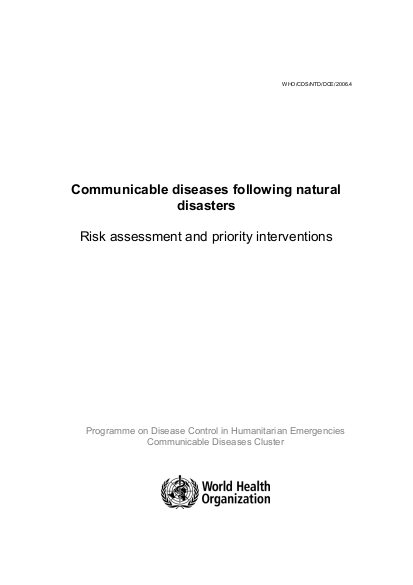
Natural disasters are catastrophic events with atmospheric, geologic and hydrologic origins. They include earthquakes, volcanic eruptions, landslides, tsunamis, floods and drought. Natural disasters can have rapid or slow onset, and serious health, social and economic consequences. During the past two decades, natural disasters have killed millions of people, adversely affecting the lives of at least one billion more people and resulting in substantial economic damage (1). Developing countries are disproportionately affected because of their lack of resources, infrastructure and disaster preparedness systems. The potential impact of communicable diseases is often presumed to be very high in the chaos that follows natural disasters. Increases in endemic diseases and the risk of outbreaks, however, are dependent upon many factors that must be systematically evaluated with a comprehensive risk assessment. This allows the prioritization of interventions to reduce the impact of communicable diseases post-disaster. The Communicable Diseases Working Group on Emergencies (CD-WGE) at WHO/HQ has developed this document to describe the communicable disease risks in populations affected by natural disasters. It is hoped that this document, by detailing the priority measures that are necessary to reduce the impact of communicable diseases following natural disasters, will help to protect the health of disaster-affected populations.
